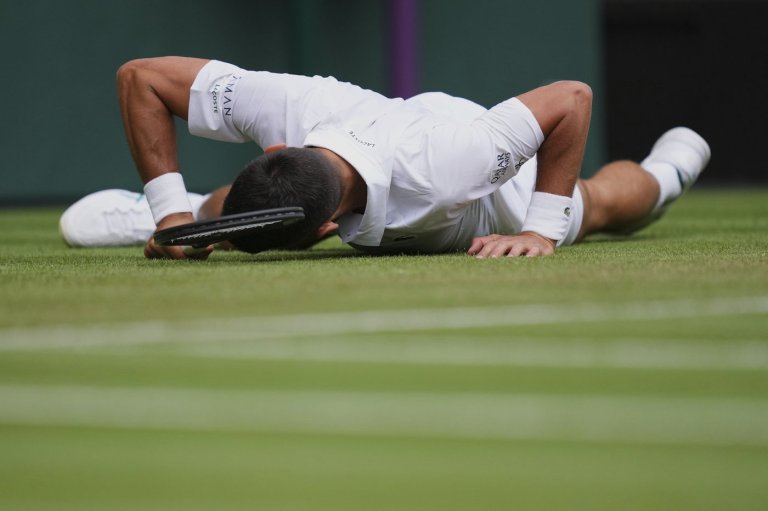
Weaver, Poje in second after short dance at Rostelecom Cup in Moscow
MOSCOW – Kaitlyn Weaver and Andrew Poje are second after the short dance at the Rostelecom Cup figure skating Grand Prix, while Canadian teammates Kirsten Moore-Towers and Dylan Moscovitch are third in pairs.
Weaver and Poje, from Waterloo, Ont., scored 61.50 points for their performance to “42nd Street,” but said they’d left some marks on the table.
“After we completed our program we were happy,” Weaver said. “It was clean and it felt comfortable. When the score came up though we were a bit confused. But it means we have to go back and make the program even more bullet-proof.”
Poje said the couple will take a close took at all the program’s technical elements.
“We missed some technical points and we need to refine those,” he said. “But we improved overall and really captured the essence of the program.”
Ekaterina Bobrova and Dmitri Soloviev of Russia lead after the short dance with 68.42, while Ekaterina Riazanova and Ilian Tkachenko of Russia are third.
Piper Gilles and Paul Poirier of Toronto are sixth.
Moore-Towers, from St. Catharines, Ont., and Moscovitch, from Toronto, scored 65.65, and completed a triple twist and throw triple loop, but Moscovitch fell on a triple toe.
Moscovitch took his fall in stride, saying, “I was working on some yoga positions on the landing.”
“I don’t think we missed a jump all week in training,” he added. “But we picked ourselves up and a had strong finish to the program. We’ve got some ground to make up in the long and that’s going to be our next challenge.”
Germans Aliona Savchenko and Robin Szolkowy lead with 73.25, while Vera Bazarova and Yuri Larionov of Russia are second.
Maxim Kovtun’s two confident quads, meanwhile, gave him a big lead after the men’s short program.
As the only competitor to try two quads, much less complete them, Kovtun ended the day nearly nine points ahead of Japan’s Tatsuki Machida, who opened with a clean quad but then stepped out of the triple toe loop that was the second jump in his combination. Javier Fernandez of Spain was in third despite falling on his quad.
In the women’s short program, Russian Julia Lipnitskaia was in the lead, followed by Carolina Kostner of Italy, the 2012 world champion. American teammates Agnes Zawadzki and Mirai Nagasu were one-hundredth of a point apart at third and fourth, though well behind the two leaders.
Kovtun is gunning for the sole Russian men’s slot in Sochi, which Turin Olympic champion Evgeni Plushenko also wants. Plushenko was to have been part of the Rostelecom field, but withdrew from what would have been his first top-tier competition since back surgery this spring. Plushenko blamed his withdrawal on a knee injury.
“I was interested in trying my strength against such a fantastic skater,” Kovtun said. “But I hope I will have another chance at Russian nationals.”
Kovtun was strong throughout his flamenco-themed program, the only notable flaw being he was almost sitting on the landing of his second quad to keep his balance.
Machida, who won gold at Skate America, lamented that he was not in good condition in Moscow, but said it’s not clear what’s troubling him.
“Actually, I don’t know,” he said when asked about the specifics.
Fernandez, the European champion and world bronze medallist , expressed satisfaction despite his fall.
“I think I just had a little problem in the pattern and I just need to keep my mind clear,” he said.
All four of the top women did triple-triple combinations. But Lipnitskaia landed a more difficult triple Lutz-triple toe combo while Kostner, Zawadzki and Nagasu all did triple toe-triple toes.
Lipnitskaia, who won gold at Skate Canada, will qualify for the Grand Prix final with a medal of any shade in Moscow. Kostner would qualify with a gold, but Zawadzki, after a seventh-place finish in the Cup of China, is out of contention. The top six skaters in each discipline qualify for the final, which is Dec. 5-8 in Fukuoka, Japan.
Lipnitskaia’s program began on a mysterious note, with her crouched down and drawing figures with her finger on the ice. Asked what that’s all about, she chose to keep the meaning hidden.
“Everyone can see what he wants to,” she said.
But once she rose from the crouch, the 2012 junior world champion’s program was crystal-clear: a clean triple-triple, a precisely landed double Axel and a very fast combination spin at the end.
— With files from The Associated Press
Join the Conversation!
Want to share your thoughts, add context, or connect with others in your community? Create a free account to comment on stories, ask questions, and join meaningful discussions on our new site.











Leave a Reply
You must be logged in to post a comment.